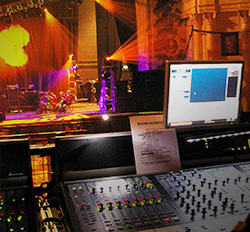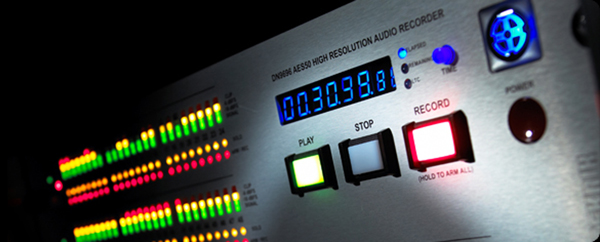
Midas PRO Series. The DL371 processing engine is loaded with four modules for a PRO3, five for a PRO6 and six for a PRO9 in the standard configuration.
The engine has dual-redundant HyperMac ports (both Cat-5e and optical), and there are also eight AES50 ports that facilitate connections to three different stage boxes and/or other AES50 I/O hardware.
It is also possible to use a PRO3, PRO6 or PRO9 with a DL431 stage box, Klark Teknik DN9696 audio recorder (up to 96 tracks), and DN9650 network bridge, which offers the ability to convert the Midas AES50 format to just about any third-party platform. (More here)
Another interesting approach with a Midas PRO2 was presented here by Todd Hartmann, audio engineering coordinator for The Austin (Texas) Stone Community Church.
Devised by Jim Roese of RPM Dynamics, the RPM-TB48 I/O is a stand-alone solution with no external interfaces required, providing a 48-channel, 96-kHz, 24-bit recording/playback solution. It utilizes a pair of Lynx Studio Technology AES50 to PCI cards, all mounted in a Sonnet Thunderbolt chassis.
Because the processor load of the conversion is being handled by the interface, the load on the CPU of the recording computer is very low.
A pair of Neutrik Ethercon cables connects the recording interface to the PRO2 via two of the AES50 ports on the console surface.
Allen & Heath GLD Series. Provides the ability to record and playback a stereo signal on a USB memory stick, and at the other end of the spectrum, standard iLive audio I/O option cards for Dante, MADI, EtherSound and Allen & Heath’s ACE protocols can be fitted to foster multi-channel recording/playback.
For example, M-Dante, M-MADI and M-MMO cards are all available for GLD to enable integration with other systems, including multi-track recording. These cards can be fit to the I/O module expansion slot in a GLD-80 mixer.
The Mini Multi-Out card provides a variety of formats of multi-channel digital output at 48 kHz sampling rate, including ADAT (three optical ports for up to 24 tracks) and iDR (two 8-channel links to the iDR Series installed product range).
Any GLD signal can be patched to any of the 56 outputs for flexible recording. GLD can transport up to 16 signals directly to the iDR-8 and iDR-4 digital mix processors, and also use the 8-channel iDR-out (analog XLR) and iDR-Dout (AES, SPDIF, Toslink digital audio) output expanders for remote feeds. (More here)
SSL Live. MADI I/O connects the SSL Live-Recorder option, a 1RU device that can record 64 tracks at 96 kHz continuously from the console’s input stage and play back the channels in sound check mode. It exports/imports native (.ptf format) projects directly to/from Pro Tools and to/from Apple XML and Steinberg XML.
Connectivity is via standard optical MADI so it can connect over long distances directly to any MADI-equipped digital console, as well as a venue’s audio distribution infrastructure (i.e., Riedel and Optocore), or routers.
The Live-Recorder system consists of a fully configured 1U PC outfitted with a 128-channel SSL MADI audio interface and with Soundscape V6.2 recorder/player software, and it has four front-loading RAID bays pre-fitted with two SSD drives.
It’s connected to the console (directly or via a router) using 2 x 64 channel pptical MADI connections, supports MTC and MMC via MIDI over Ethernet (or any other MTC/MMC-capable USB synchronizer or MIDI interface) for external system transport control, and it can sync via MADI or word clock (via BNC). The software also offers crash recovery routines which will retrieve incomplete audio recordings on reboot after a host system catastrophic failure such as sudden power loss. (More here)



